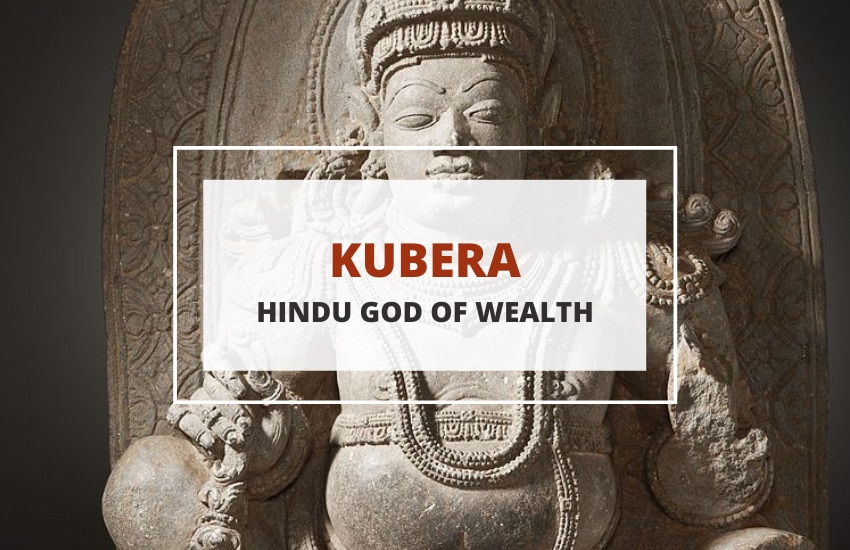
Table of Contents
Kubera is one of those gods that has made his name known throughout multiple religions. Originally a Hindu deity, Kubera can be found in Buddhism and Jainism as well. Often depicted as a pot-bellied and deformed dwarf riding on a man and accompanied by a mongoose, Kubera is a god of the world’s wealth and the Earth’s riches.
Who is Kubera?
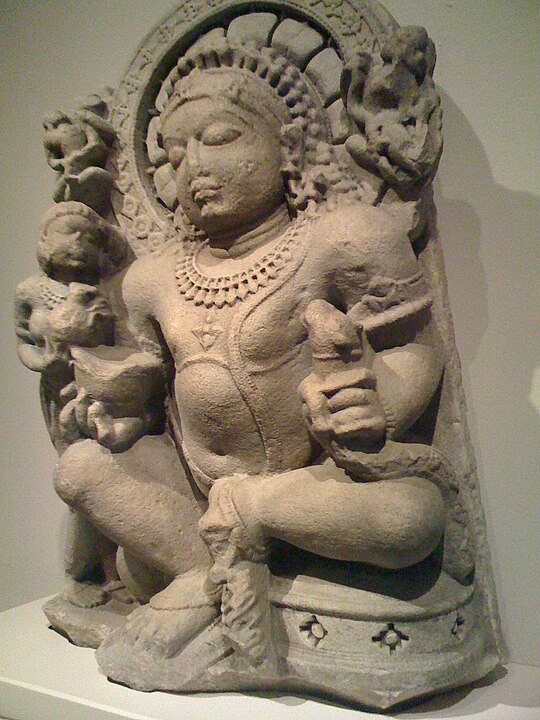
Kubera’s name quite literally means Deformed or Ill-Shaped in Sanskrit which is how he’s typically depicted. That may have something to do with the fact that he was originally a king of the evil spirits in ancient Vedic-era texts. In these texts, he was even described as a Lord of thieves and criminals.
Interestingly, Kubera later achieved a Deva or God status in the Puranas texts and the Hindu epics. That’s around the time he was kicked out of his kingdom in Sri Lanka by his half-brother Ravana. Since then, the god Kubera has been living in his new kingdom Alaka, in the Himalayan Mount Kailasa right next to the residence of god Shiva.
A tall mountain seems like a fitting place for a god of Earth’s riches, and he spends his days there serviced by other Hindu demigods. Plus, Kubera’s association with the Himalayas is also why he’s viewed as a protector of the North.
What Did Kubera Look Like?
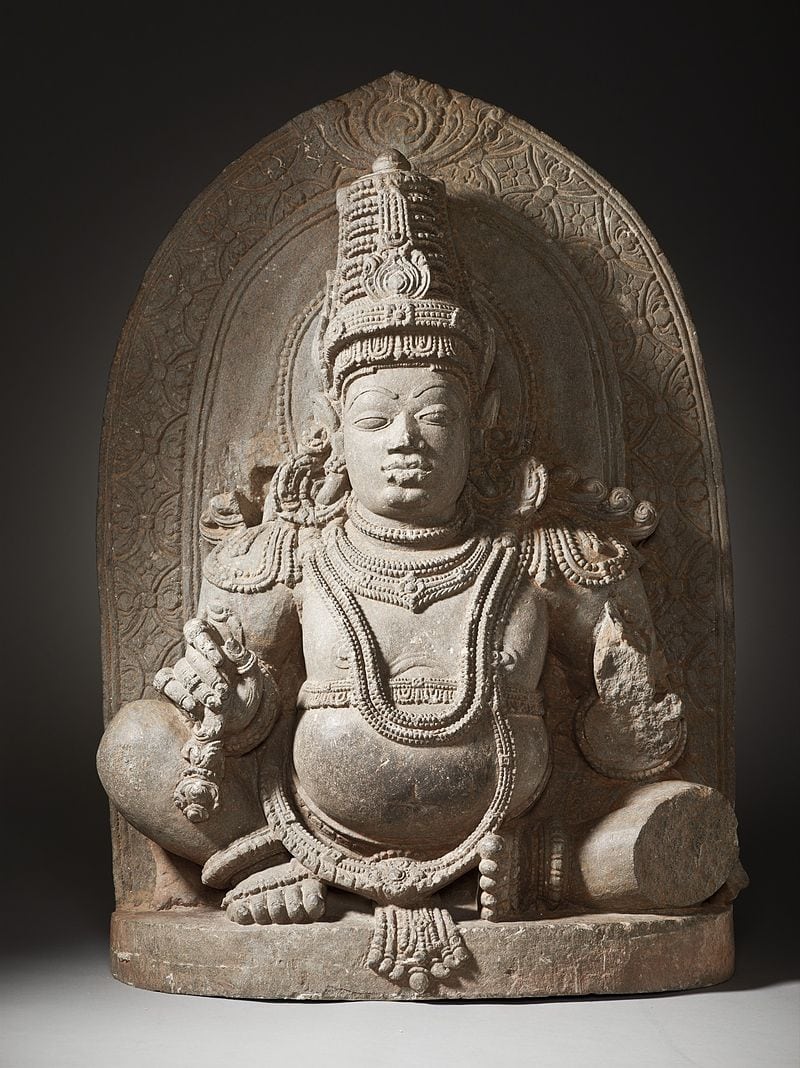
Most of Kubera’s iconography shows him as a fat and deformed dwarf. His skin usually has the color of lotus leaves and he often has a third leg. His left eye is usually unnaturally yellow, and he tends to only have eight teeth.
As a god of wealth, however, he often carries a bag or a pot of gold. His outfit is also always spruced up with lots of colorful jewelry pieces.
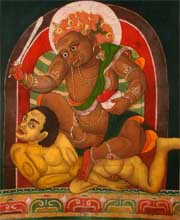
Some depictions show him riding a flying Pushpak chariot gifted to him by Lord Brahma. Others, however, have Kubera riding a man. In addition to a bag of gold, the god often carries a mace too. Some texts connect him to elephants, while in others he’s often accompanied by a mongoose or depicted holding a pomegranate.
King of the Yakshas
After his transition to a Deva god, Kubera also became known as a king of the yakshas. In Hinduism, yakshas are typically benevolent nature spirits. They can be mischievous too, particularly when it comes to their ravenous sexual desires or general capriciousness.
More importantly, the yakshas are also the guardians of the Earth’s riches. They often live in deep mountain caves or the roots of ancient trees. Yakshas can shapeshift and are powerful magical beings.
The yakshas are some of the oldest mythological beings and demigods to be depicted in Hinduism together with the snake-like naga fertility deities. Yakshas are often designated to a particular area or town but, as a king of all yakshas, Kubera is revered everywhere.
God of Earth’s Riches
An alternative theory about the meaning of Kubera’s name is that it comes from the words for earth (ku) and hero (vira). This theory is a bit confusing given that Kubera was first a god of thieves and criminals. Still, the similarity can’t be ignored.
As a god of Earth’s treasures, however, Kubera’s task isn’t to keep them buried and prevent people from accessing them. Instead, Kubera is viewed as a giver of riches to all that please him. As such, he’s also a guardian of travelers and wealthy people. He is even viewed as a minor deity of marriage, likely as a way to ask Kubera to bless new marriages with wealth.
Kubera in Buddhism and Jainism
In Buddhism, Kubera is known as Vaiśravaṇa or Jambhala, and is associated with the Japanese god of wealth Bishamon. Like the Hindu Kubera, Bishamon and Vaiśravaṇa are protectors of the North too. In Buddhism, the deity is viewed as one of the Four Heavenly Kings, each protecting a certain direction of the world.
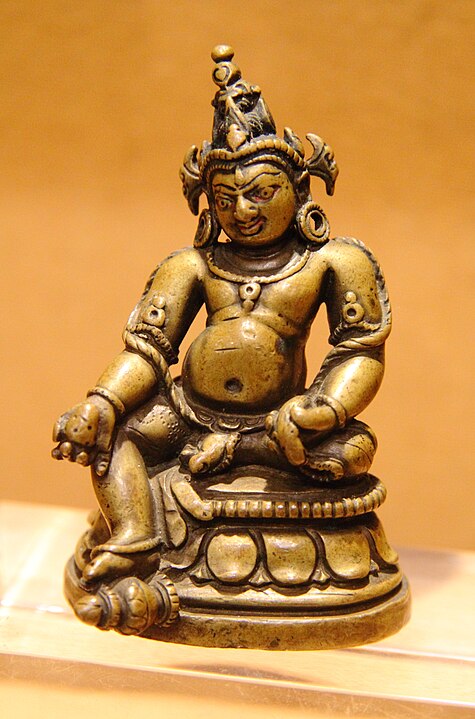
Kubera is also often associated with the Buddhist god Pañcika whose wife Hariti is a symbol of wealth and abundance. Pañcika and Kubera are also drawn very similarly.
In Buddhism, Kubera is also sometimes called Tamon-Ten and is one of the Jūni-Ten – the 12 Hindu gods adopted by Buddhism as guardian deities.
In Jainism, Kubera is called Sarvanubhuti or Sarvahna and is sometimes depicted with four faces. He’s also typically dressed in rainbow colors and is given either four, six, or eight arms, with most of them holding various weapons. He still comes with his signature pot or bag of money, however, and is often shown with a citrus fruit as well. The Jain version is distinctly more related to the Buddhist Jambhala version of the god rather than the Hindu Kubera original.
Symbols of Kubera
As a god of the Earthly treasures, Kubera is revered by all who seek to get wealthier in one way or another. His unappealing portrayal can be seen as the ugliness of avarice, but it can also simply be a remnant of his past as an evil deity of thieves and criminals.
Still, it’s not uncommon for gods of wealth to be depicted as being overweight and somewhat deformed. He’s also said to live in a mountain, so the dwarf-like appearance is to be expected.
The somewhat militaristic depictions of Kubera, particularly in Buddhism and Jainism are more related to him being a guardian deity of temples rather than an association between wealth and war.
Kubera in Modern Culture
Unfortunately, Kubera is not really represented in modern pop culture. Whether it’s because of his deformed demeanor or because he’s a god of wealth, we don’t know. People certainly gravitate away from gods of wealth nowadays, especially in relation to the Eastern religions.
So, the few mentions of Kubera in modern pop culture we could find don’t even have anything to do with the old deity. For example, the popular manga webtoon Kubera is about a magical orphaned girl. There’s also the antagonist Kuvira in the fourth season of the famous animation Avatar: The Legend of Korra. Despite her name also meaning Earth Hero (ku-vira), that character also seems wholy unrelated to the Hindu deity.
In Conclusion
Somewhat deformed and quite short and overweight, the Hindu god Kubera has made his way into Chinese and Japanese Buddhism as well as into Jainism. He’s a god of wealth in all of those religions and he commands the yaksha demigods or spirits of wealth and sexual fervency.
Kubera may not be as popular today as he was centuries ago, but he undeniably played an important role in shaping the religions and cultures of East Asia for millennia.








